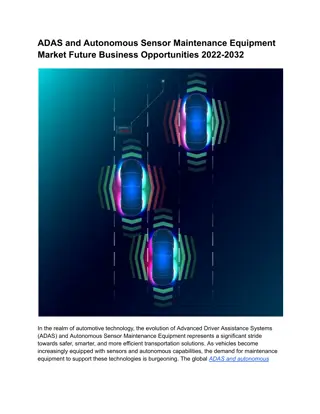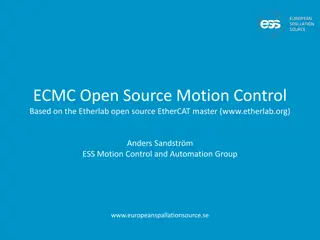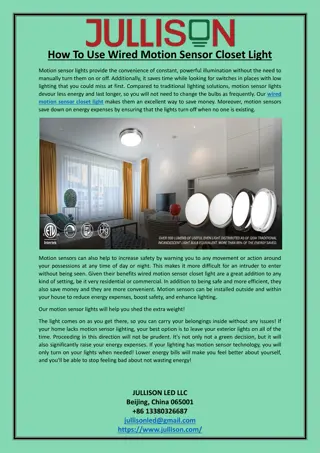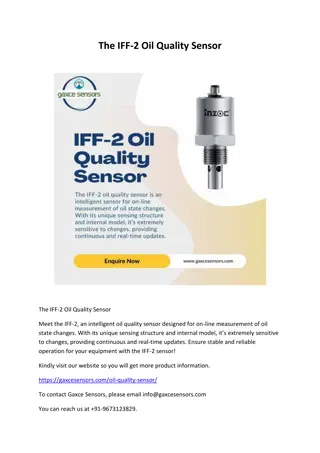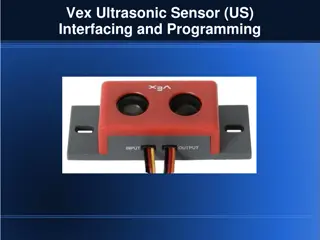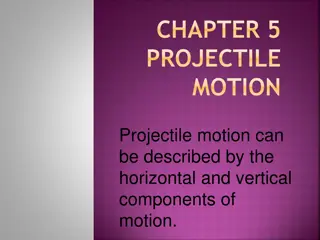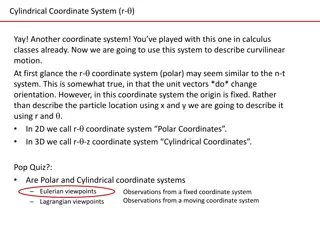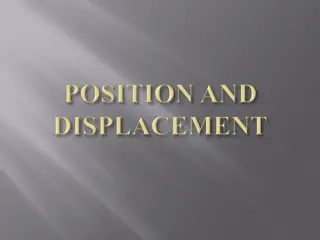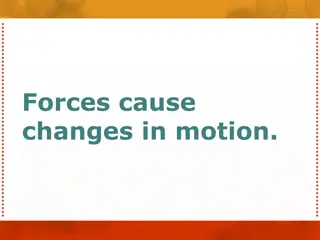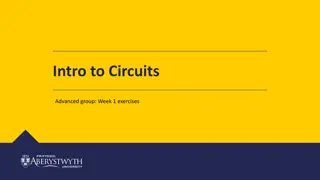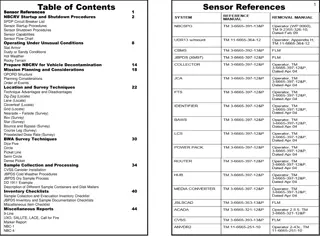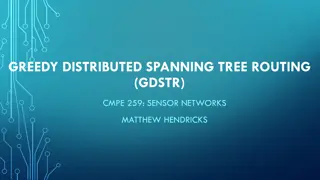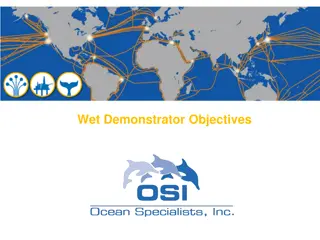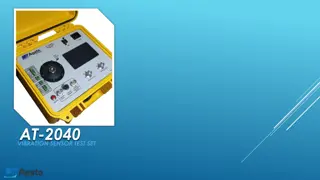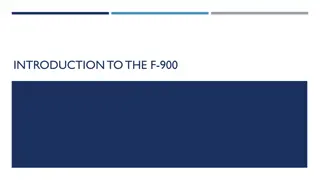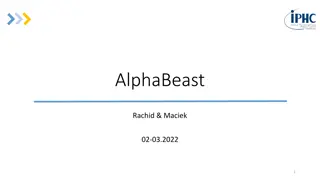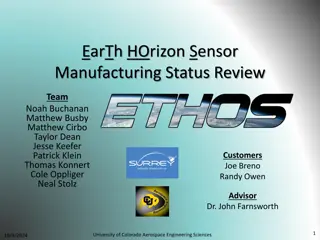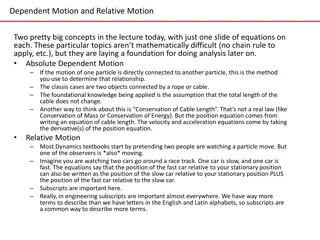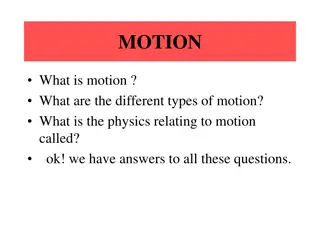Understanding Remote Sensing Sensor Resolutions & Colour Composite
Explore the art and science of remote sensing, detailing sensor types, resolution categories, and color composite techniques. Learn about the stages involved in remote sensing, sensor variations, and band designations for satellites like Landsat 8. Discover the significance of pixel, high-resolution
3 views • 13 slides
ADAS and Autonomous Sensor Maintenance Equipment Market Opportunities 2022-2032
The global ADAS and autonomous sensor maintenance equipment market was valued at $2,704.7 thousand in 2022, and it is expected to grow at a CAGR of 49.68% and reach $1,52,666.5 thousand by 2032.\nRead Report Overview: \/\/bisresearch.com\/industry-report\/adas-autonomous-sensor-maintenance-equipment
4 views • 3 slides
ECMC: Open Source Motion Control with EtherCAT Overview
ECMC is an open-source motion control module designed for EPICS environments, integrating EtherLab's EtherCAT master. It offers advanced features like synchronized motion, distributed clocks, and PLC functionalities, making it ideal for various automation applications. The system architecture and ha
0 views • 42 slides
How To Use Wired Motion Sensor Closet Light
Motion sensor lights provide the convenience of constant, powerful illumination without the need to manually turn them on or off. Additionally, it saves time while looking for switches in places with low lighting that you could miss at first. Compared to traditional lighting solutions, motion sensor
1 views • 1 slides
The IFF-2 Oil Quality Sensor
\nThe IFF-2 Oil Quality Sensor \nMeet the IFF-2, an intelligent oil quality sensor designed for on-line measurement of oil state changes. With its unique sensing structure and internal model, it\u2019s extremely sensitive to changes, providing continuous and real-time updates. Ensure stable and reli
1 views • 2 slides
Vex Ultrasonic Sensor Interfacing and Programming Guide
Understand how to interface and program a Vex Ultrasonic Sensor, which utilizes high-frequency sound waves to measure distances. Learn the proper connections to the controller and explore the programming statements for initiating and reading sensor values. Delve into configuring the Cortex Controlle
0 views • 8 slides
Understanding Projectile Motion: Characteristics, Examples, and Formulas
Projectile motion involves the motion of objects under the influence of gravity, with both vertical and horizontal components. This type of motion is seen in activities such as throwing a ball, kicking a football, or dropping objects. The motion is described by specific formulas, including calculati
1 views • 19 slides
Understanding Projectile Motion: Components and Trajectories
Projectile motion involves the horizontal and vertical components of motion, where objects follow parabolic trajectories under the influence of gravity. The horizontal and vertical motions are independent of each other, leading to a variety of curved paths. This phenomenon is illustrated through exa
1 views • 13 slides
Understanding Newton's First Law of Inertia
Newton's first law of inertia states that objects remain at rest or in uniform motion unless acted upon by an external force. This law, also known as the law of inertia, explains how objects tend to maintain their current state of motion unless influenced by an external force. Objects at rest stay a
0 views • 14 slides
Understanding Motion: Frames of Reference and Relative Motion
Motion is defined as a change in position over time. To describe motion accurately, one needs to understand frames of reference and relative motion. Frames of reference are systems of objects used to determine if something is in motion, while relative motion involves movement in relation to a refere
3 views • 14 slides
Understanding Curvilinear Motion with Cylindrical Coordinates in Physics
Cylindrical coordinates, specifically the r- coordinate system, are useful in describing curvilinear motion. This system helps explain motion in relation to a fixed origin, making it ideal for scenarios involving rotation or changes in angle. By using radial and transverse unit vectors, positions, v
1 views • 16 slides
Understanding Position, Motion, and Displacement in Physics
Position in physics refers to a place or location within a coordinate system, crucial for describing an object's motion through time. It involves factors like observer frame, coordinates, and whether the object is at rest or in motion. Motion is defined by an object's position, speed, direction, and
0 views • 15 slides
Understanding Forces in Motion Throughout History
Forces play a crucial role in causing changes in motion, as observed through the perspectives of Aristotle on natural and violent motion, the beliefs about Earth's rest, and Copernicus challenging the geocentric view with a heliocentric model. The concept of forces driving motion has evolved over ce
1 views • 27 slides
Understanding Motion: Concepts and Definitions in Physics
Motion in physics is defined as the change in position of an object over time. It involves concepts like rest, motion, distance, displacement, rate of motion, and types of motion. Rest and motion are relative to a reference point, while distance and displacement differ in their scalar and vector nat
0 views • 25 slides
Illuminate Your Space Efficiently with Motion Sensor Ceiling Lights
In the realm of modern home lighting solutions, motion sensor ceiling lights stand out as versatile and efficient fixtures that seamlessly blend functionality with energy savings. These innovative lights are designed to detect motion within their vic
0 views • 2 slides
Understanding Linear and Rotational Motion in Physics
Explore the concepts of linear momentum, center of mass, rotational motion, and angular displacement in physics. Learn how to determine the center of mass of objects, analyze motion of particle groups, and understand the conservation of momentum in systems under external forces. Delve into the funda
0 views • 18 slides
Understanding Circular Motion in Physics
Circular motion involves objects moving in a circular path at a constant speed, experiencing acceleration and centripetal force. This motion is characterized by angular speed, centripetal acceleration, and the necessary centripetal force. The concept of uniform circular motion and angular displaceme
3 views • 38 slides
Understanding Newton's First Law of Motion
Exploring the foundational concepts of motion and forces, this content delves into Isaac Newton's First Law of Motion. Describing how objects behave when the net force acting on them is zero, the law highlights the significance of inertia and balanced forces in determining an object's state of rest
0 views • 9 slides
Understanding Vertical Motion and Gravity in Kinematics
Explore the principles of vertical motion and gravity in kinematics through scenarios involving throwing objects, free-fall motion, and calculating heights. Learn how to model vertical motion with acceleration due to gravity, find maximum heights of thrown objects, solve extended problems, and under
2 views • 12 slides
Understanding Newton's Laws of Motion
Explore the fundamental concepts of Newton's Laws of Motion, including net forces, combining forces, balanced versus unbalanced forces, and the concept of inertia. Learn how these principles explain the behavior of objects in motion and at rest, and discover the impact of mass on an object's resista
0 views • 17 slides
Understanding Sensor-Based Mobile Web Fingerprinting and Attacks
This content discusses sensor-based mobile web fingerprinting, cross-site input inference attacks, smartphone sensors, motion sensor data collection, and HTML5 DeviceMotionEvent interface. It highlights the potential security risks associated with sensor data access on mobile devices and the need fo
0 views • 30 slides
Advanced Circuits Group Week 1 Exercises Overview
This introduces the Advanced Circuits group's Week 1 exercises aiming to wire up a smart home with interconnected sensors, Google Home/Alexa, and multipurpose buttons. The plan includes using Arduino, battery, breadboard, lights, LDR, motion sensor, gas sensor, and door lock servo with a keypad over
0 views • 11 slides
Sensor References and Procedures for NBCRV Operations
This document provides a detailed guide on sensor references, startup, and shutdown procedures for the Nuclear, Biological, and Chemical Reconnaissance Vehicle (NBCRV). It includes information on various sensors, deployment techniques, operating under different conditions, and mission planning consi
0 views • 25 slides
Understanding Joint Motion: Osteokinematic and Arthrokinematic Movements
Joint motion involves osteokinematic movements, which are under voluntary control and include flexion, extension, and more. End-feel sensations like bony, capsular, and springy block indicate different joint conditions. Arthrokinematic motion refers to how joint surfaces move during osteokinematic m
0 views • 17 slides
Understanding Newton's Laws of Motion
Newton's Laws of Motion explain the relationship between forces and motion. The first law states that an object in motion stays in motion unless acted upon by a net force, while the second law describes how force is related to an object's mass and acceleration. The third law states that for every ac
0 views • 21 slides
Understanding Greedy Distributed Spanning Tree Routing in Wireless Sensor Networks
Wireless sensor networks play a critical role in various applications, and the Greedy Distributed Spanning Tree Routing (GDSTR) protocol, developed by Matthew Hendricks, offers an efficient routing approach. This protocol addresses challenges such as scalability, dynamic topologies, and sensor node
0 views • 34 slides
Wet Demonstrator Objectives - Sensor-enabled Submarine Telecommunications System
This content discusses the objectives and features of a sensor-enabled submarine cable system, highlighting the capabilities and requirements for incorporating sensors along the cable. It emphasizes the importance of demonstrating the installation and accuracy of sensors in a real-world scenario, en
0 views • 21 slides
AT-2040 Vibration Sensor Test Set Overview
AT-2040 is a portable vibration calibrator with sensor stimulation, built-in features, and advanced algorithms for accurate readings. It can measure sensitivity for various types of sensors without additional equipment, making it versatile and user-friendly. The device comes with specifications incl
0 views • 5 slides
Comprehensive Overview of the F-900 Ethylene Sensor
The F-900 Ethylene Sensor is a compact device designed for high ethylene sensitivity, real-time monitoring, and internal data storage. It aids in research, agricultural practices, and fruit ripening management by accurately measuring ethylene levels. The sensor's theory of operation involves oxidati
0 views • 30 slides
Evaluation of OMPS Sensor and EV SDR Performance by NASA
NASA's OMPS Ozone Science Team conducted an evaluation of the OMPS sensor and EV SDR performance, concluding that the sensors are performing well with good calibrations and no signs of degradation. There were troubling differences between the IDPS and PEATE SDRs, leading to a recommendation against
0 views • 29 slides
Development of Silicon Tracker and Sensor Technology for sPHENIX Detector
Research and development efforts are underway for silicon tracker and sensor technology to enhance the functionality of the sPHENIX detector. The project aims to improve mass resolution, cover specific areas effectively, and optimize sensor configurations. Various sensor concepts are being explored
0 views • 25 slides
Next Version Development for AlphaRad4 Sensor Front-End
In this project, the goal is to create the next version of the AlphaRad4 sensor front-end system by modifying the AlphaRad3 front-end to work with the sensors from AlphaRad4. The project involves various functional and electrical specifications, including gain ranges, comparators, counters, and diff
0 views • 18 slides
Understanding Newton's Laws of Motion
Newton's Laws of Motion describe how objects behave in response to external forces. The first law states that objects in motion remain in motion unless acted upon by a force, while objects at rest stay at rest. The second law relates force, mass, and acceleration, showing how they are interconnected
0 views • 11 slides
Understanding Motion and Newton's Laws
Explore the concepts of motion, distance, speed, and velocity as they relate to Newton's Laws of Motion. Learn about measuring motion, calculating speed, graphing motion on distance-time graphs, and understanding velocity. Discover how motion is constant and how relative motion is used. Practice cal
0 views • 36 slides
EarTh.HOrizon Sensor Manufacturing Status Review at University of Colorado Aerospace Engineering Sciences
This comprehensive status review covers various aspects of the EarTh.HOrizon sensor manufacturing project at the University of Colorado Aerospace Engineering Sciences. The status of manufacturing, software development, electrical components, algorithms, mechanical aspects, and budget allocations are
0 views • 64 slides
Understanding Motion and Newton's Laws
Motion is the constant change in position of objects, measured by distance and displacement. Speed is the rate of motion, while velocity includes direction. Graphing motion helps visualize speed changes over time. Newton's Laws explain the behavior of objects in motion.
0 views • 38 slides
Water Quality Monitoring Project Meeting Highlights
The INTERREG Meeting ATCZ-86 held on 02.09.2021 showcased project progress reports, discussions on sensor development, webserver deployment, and monitoring station concepts. Activities included multi-sensor systems for water parameter measurement, sensor module evaluations, and development of data h
0 views • 13 slides
Understanding Dependent and Relative Motion in Dynamics
Dependent Motion and Relative Motion are fundamental concepts in Dynamics, providing the foundation for future analysis. Dependent Motion involves constraints like ropes or cables, while Relative Motion considers observers in motion. Dynamics involves applying a limited set of equations in diverse w
0 views • 18 slides
Understanding Motion: Types and Physics
Motion refers to a body changing position with respect to its surroundings. Different types of motion include linear, rotatory, and oscillatory motion. The physics relating to motion is called Mechanics, which comprises Dynamics and Kinematics. Scalars and vectors play a crucial role in describing t
0 views • 8 slides
Enhancing Autonomous IoT Device Pairing with Different Sensor Types
This research explores enabling autonomous IoT device pairing using various sensor types to streamline communication between smart devices. It addresses the challenges posed by heterogeneous sensor types and the need for efficient, secure, and human-independent pairing solutions. The study focuses o
0 views • 34 slides

